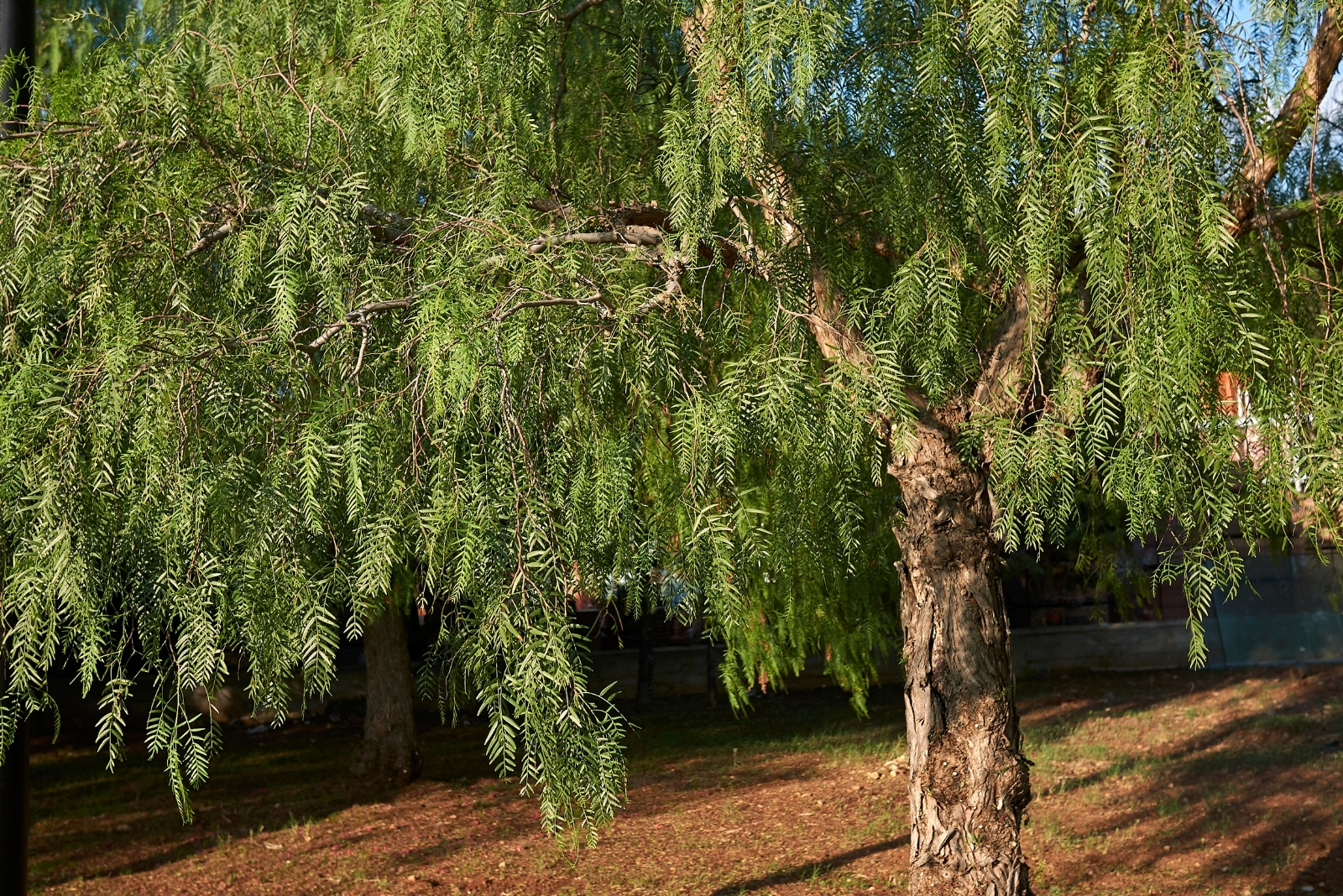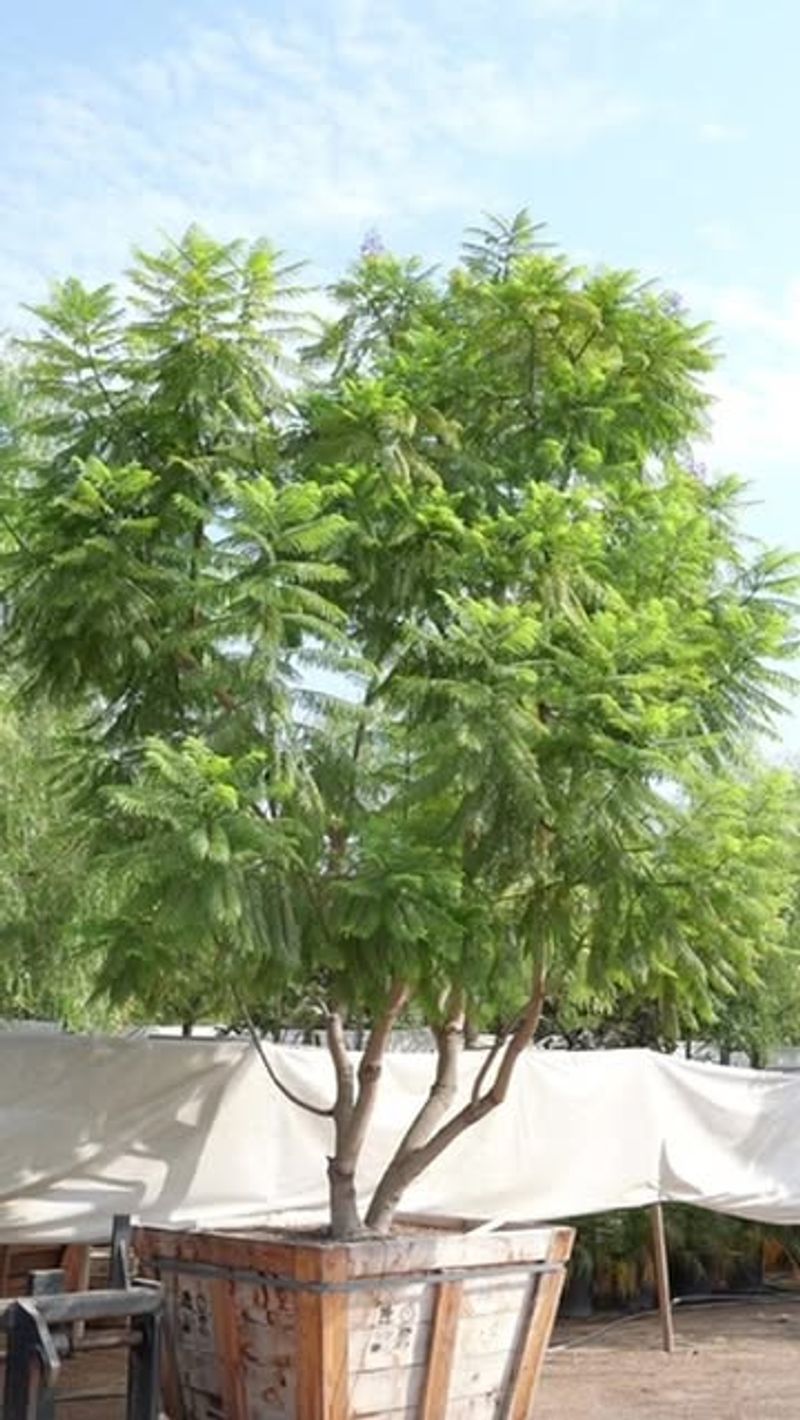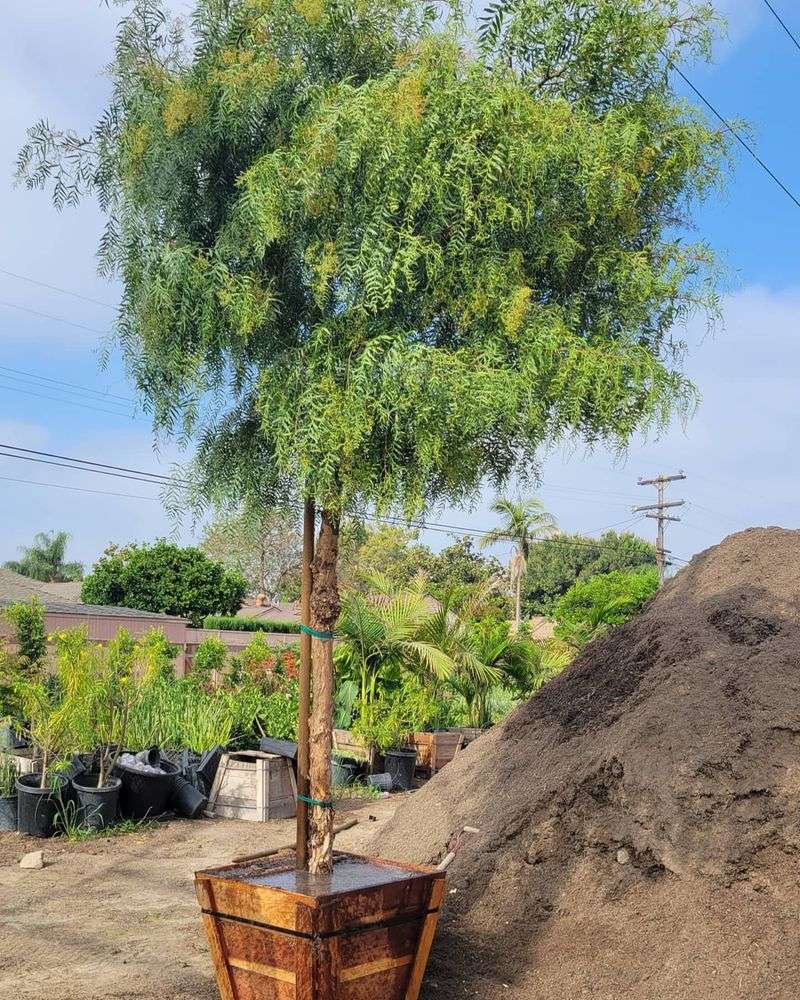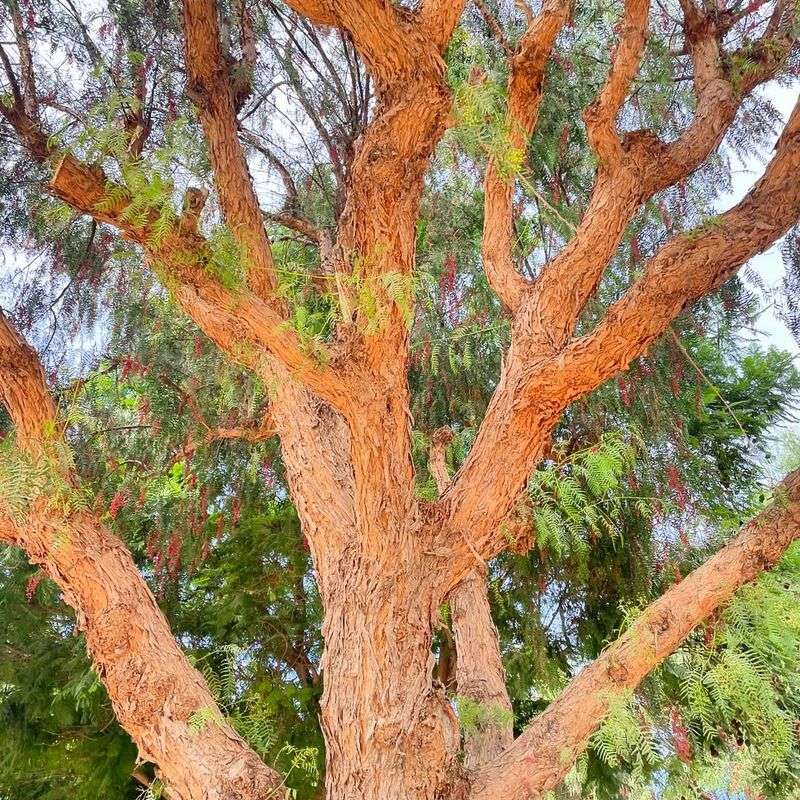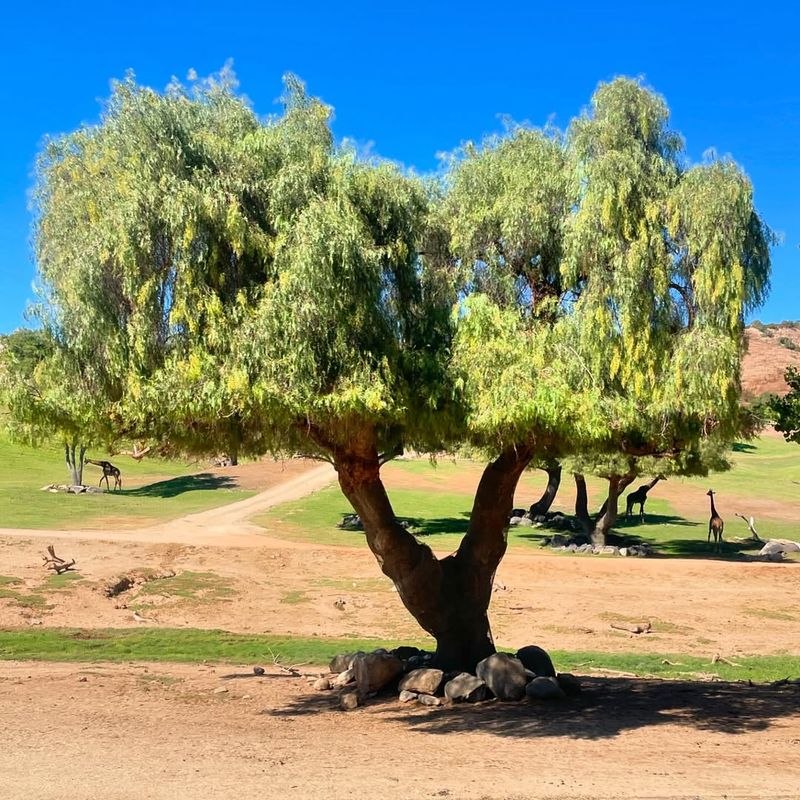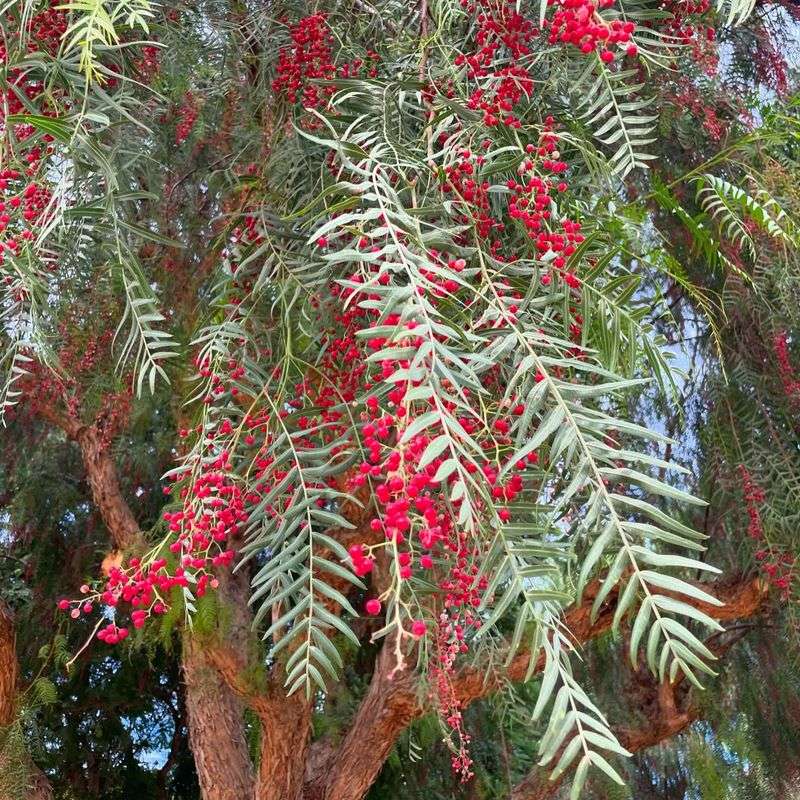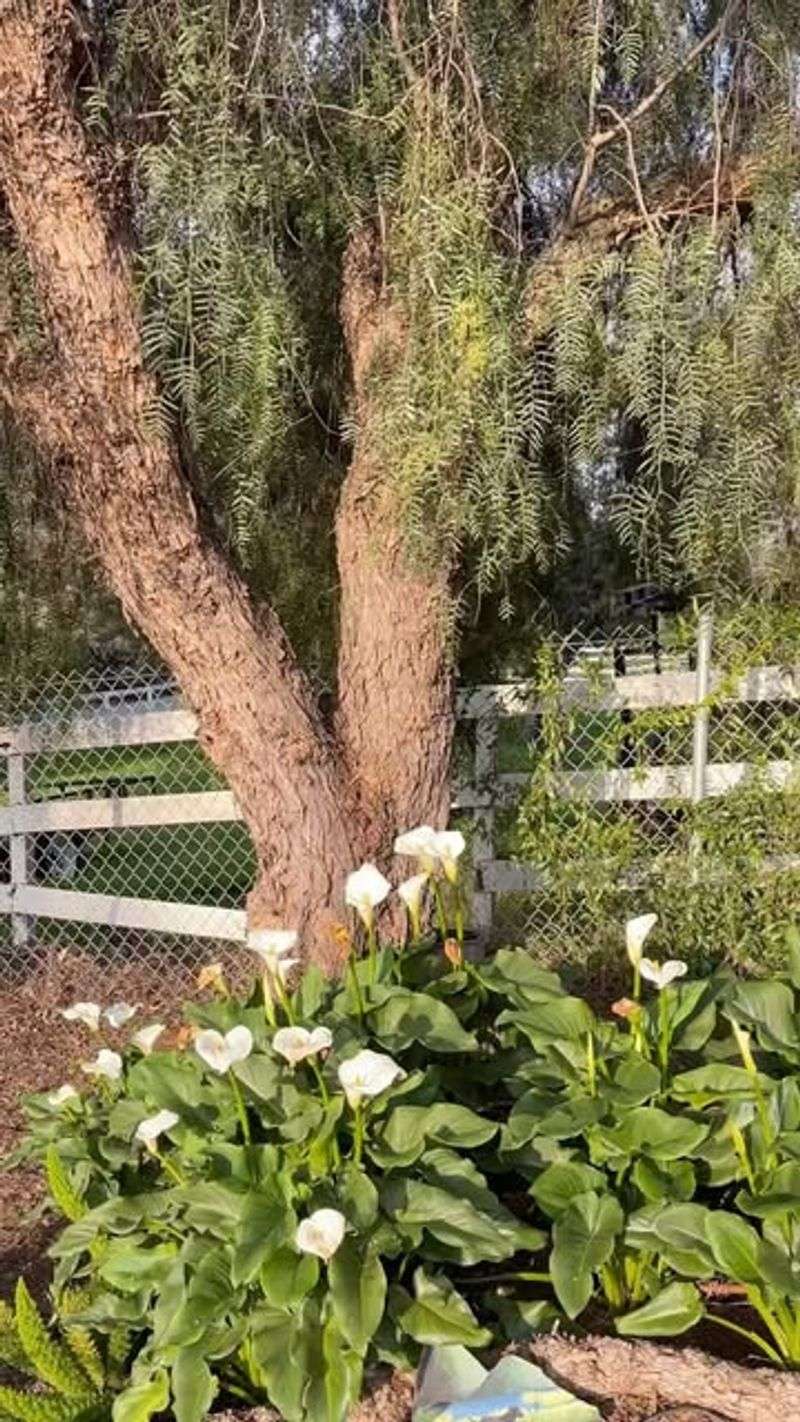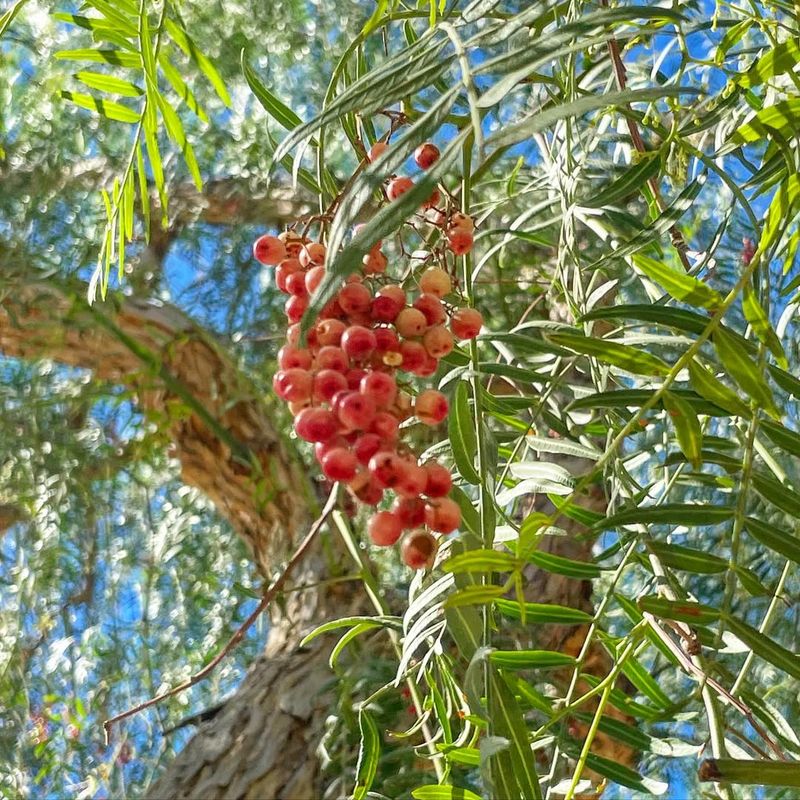If you’ve ever wandered through California in autumn, you might spot a tree buzzing with life and color. It’s the California Pepper Tree, quietly turning neighborhoods into a pollinator paradise.
Bees, butterflies, and hummingbirds flock to its fragrant clusters, creating a magical, living scene. Seeing it up close feels like stumbling upon nature’s own party.
1. Abundant Nectar Production Peaks in Fall
California Pepper Trees produce tiny cream-colored flowers that overflow with sweet nectar during fall months. Pollinators can smell this sugary reward from far away, drawing them in like a magnet.
Across California, these trees become feeding stations when other plants have stopped blooming. Bees especially love the easy-to-reach nectar that helps them build up energy reserves before winter arrives in the Golden State.
2. Late-Season Blooms Fill a Critical Gap
Most wildflowers finish blooming by late summer, leaving pollinators scrambling for food sources. Pepper trees bloom precisely when other options disappear, creating a lifeline for hungry insects.
Throughout California communities, these trees act as emergency food pantries for pollinators preparing for colder weather. Monarchs migrating through the state particularly benefit from this perfectly timed nectar source during their long journey.
3. Pollen-Rich Flowers Provide Essential Protein
Nectar provides energy, but pollen delivers the protein pollinators need for reproduction and survival. California Pepper Trees generate massive amounts of protein-rich pollen throughout autumn.
Female bees gather this golden dust to feed their developing larvae back at the hive. In California gardens and parks, you can watch bees coat themselves in yellow pollen as they work methodically through each flower cluster.
4. Cascading Branch Structure Creates Easy Access
Unlike tall trees with flowers high in the canopy, pepper trees have gracefully drooping branches that hang within easy reach. Pollinators of all sizes can land and feed without struggling against wind or gravity.
California gardeners notice how butterflies especially appreciate these low-hanging branches. Even smaller native bees find the accessible flowers perfect for their shorter flight ranges and limited energy reserves during autumn.
5. Warm Microclimate Around Dense Foliage
Pepper trees create sheltered spaces beneath their thick, feathery leaves where temperatures stay warmer than surrounding areas. Pollinators seek out these cozy spots when autumn mornings turn chilly across California.
Cold-blooded insects need warmth to fly and forage effectively. The protected environment under pepper tree canopies allows them to start feeding earlier in the day and continue working later into the evening hours.
6. Continuous Flowering Extends Through Several Weeks
Rather than blooming all at once, pepper trees flower in waves that stretch across multiple weeks during fall. Different branches reach peak bloom at different times, ensuring constant food availability.
California pollinators benefit from this extended buffet that keeps them fed throughout the entire autumn season. Smart gardeners plant pepper trees knowing they provide reliable resources when other plants have long finished their blooming cycles.
7. Fragrant Blossoms Attract Diverse Pollinator Species
The distinctive peppery-sweet scent of these flowers travels on autumn breezes, advertising their presence to pollinators across neighborhoods. Different insects respond to various chemical compounds in the fragrance, attracting remarkable biodiversity.
From tiny sweat bees to large carpenter bees, California pepper trees welcome everyone. Observers in the state often count dozens of different pollinator species visiting a single tree on warm fall afternoons.

